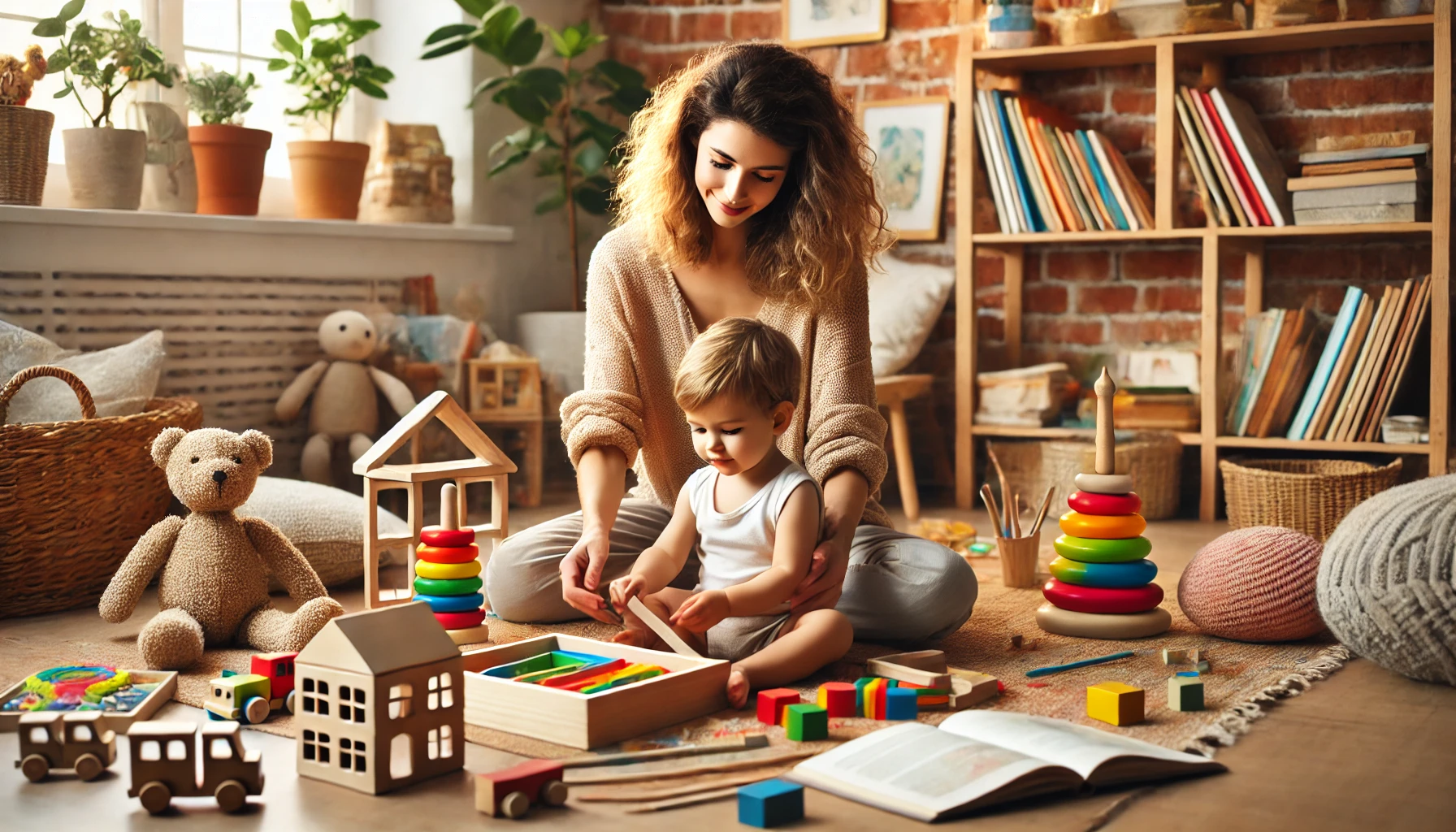Early childhood is a crucial stage for learning and development. Children between the ages of 2 and 5 are naturally curious and eager to explore the world around them. Parents and caregivers can use simple yet effective activities to stimulate their cognitive, motor, social, and emotional growth—all while having fun at home.
In this article, we’ll explore 10 engaging educational activities designed specifically for young children. These activities focus on hands-on learning, creativity, and skill development to build a strong foundation for lifelong learning.
1. Sensory Bins for Exploration and Learning
What You Need:
- Large plastic bin
- Rice, pasta, beans, or sand
- Small toys, scoops, and containers
How It Helps:
Sensory play engages multiple senses, helping children develop fine motor skills, hand-eye coordination, and problem-solving abilities. The different textures stimulate their sense of touch, while scooping and pouring strengthen their grip.
How to Play:
- Fill a bin with a base material (such as rice or beans).
- Hide small toys or objects inside and encourage your child to find them.
- Let your child scoop, pour, and explore different textures.
Bonus Tip:
You can theme the sensory bin to match different learning topics, such as using blue-dyed rice and toy fish for an ocean-themed bin.
2. Sorting and Matching Games
What You Need:
- Colored buttons, pom-poms, or blocks
- Small containers or paper plates
How It Helps:
Sorting activities teach children about colors, shapes, and categories while enhancing their critical thinking and problem-solving skills.
How to Play:
- Give your child a set of colorful objects.
- Ask them to group items by color, size, or shape.
- Introduce challenges, like using tweezers to pick up objects for extra fine motor skill practice.
Bonus Tip:
Create a DIY color-matching board by gluing colored paper to a sheet of cardboard and having your child place matching objects on it.
3. DIY Alphabet and Number Hunt
What You Need:
- Sticky notes or index cards
- Marker
- Open space for hiding notes
How It Helps:
This game promotes letter and number recognition while improving memory and problem-solving skills.
How to Play:
- Write letters or numbers on sticky notes and hide them around the house.
- Ask your child to find a specific letter or number.
- Once they find it, encourage them to say the name or sound out the letter.
Bonus Tip:
Make it active by having your child jump, hop, or crawl to reach each hidden note!
4. Storytelling with Picture Cards
What You Need:
- Printed pictures or flashcards
- A small notebook or whiteboard
How It Helps:
Storytelling strengthens vocabulary, creativity, and listening comprehension.
How to Play:
- Show your child a picture and ask them to describe what’s happening.
- Encourage them to create a short story about the picture.
- Ask open-ended questions to expand their imagination.
Bonus Tip:
Use a sequence of pictures and challenge your child to arrange them in the correct order to tell a story.
5. Nature Walk and Scavenger Hunt
What You Need:
- A printable scavenger hunt list (with items like leaves, rocks, flowers)
- Small bag for collecting items
How It Helps:
Nature walks boost observational skills, sensory awareness, and physical activity.
How to Play:
- Give your child a list of objects to find outside.
- Encourage them to collect interesting items and talk about their textures and colors.
- Discuss how each object plays a role in nature.
Bonus Tip:
Create a “nature collage” by gluing collected items onto paper.
6. Baking Together: Measuring and Mixing
What You Need:
- Simple ingredients (flour, sugar, eggs, etc.)
- Measuring cups and spoons
How It Helps:
Baking introduces math concepts (measuring, counting) and science (mixing, reactions). It also enhances fine motor skills.
How to Play:
- Let your child help measure and pour ingredients.
- Talk about numbers and sequences as you follow a recipe.
- Allow them to mix and observe changes in texture.
Bonus Tip:
Make letter or shape-shaped cookies to reinforce learning!
7. Water Play and Science Experiments
What You Need:
- Plastic cups, spoons, and funnels
- Water
- Food coloring (optional)
How It Helps:
Water play develops hand-eye coordination, sensory awareness, and introduces early science concepts.
How to Play:
- Let your child pour water between containers using different-sized cups.
- Add color mixing experiments by combining colored water.
- Introduce sinking and floating concepts with small objects.
Bonus Tip:
Freeze small toys in ice cubes and have your child “rescue” them by melting the ice with warm water.
8. Dance and Freeze Game
What You Need:
- A music player
- Open space
How It Helps:
Dancing improves gross motor skills, balance, and rhythm.
How to Play:
- Play music and encourage your child to dance freely.
- Randomly pause the music—when it stops, they must freeze!
- Change the rules to make it more fun (e.g., freeze like an animal).
Bonus Tip:
Use this activity to practice following instructions by calling out actions (e.g., “Jump like a frog!”).
9. Shape and Pattern Recognition with Blocks
What You Need:
- Wooden or plastic building blocks
- Printed pattern cards (optional)
How It Helps:
This activity enhances spatial awareness, problem-solving, and shape recognition.
How to Play:
- Ask your child to build specific shapes or structures.
- Show them a pattern and challenge them to replicate it.
- Encourage free play to explore creativity.
Bonus Tip:
Use colored tape to create patterns on the floor for them to follow.
10. Puppet Play for Social and Emotional Learning
What You Need:
- Socks or paper bags
- Markers and craft materials
How It Helps:
Puppet play helps children express emotions, practice communication, and develop social skills.
How to Play:
- Help your child create simple puppets.
- Act out short scenarios that teach emotions and problem-solving.
- Encourage your child to make up their own puppet stories.
